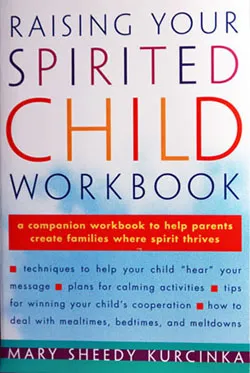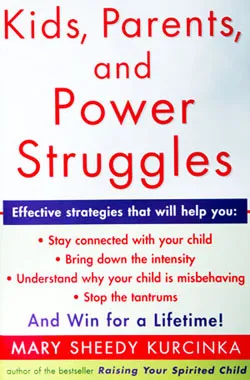When you offer a choice and your child disagrees

What do you do?
You have offered your child a choice but she didn’t respond or doesn’t want either option you have presented. Believe it or not, this is an opportunity to teach your child that she is responsible for what happens to him. Okay, we know this might sound a bit bizarre, especially if you are dealing with a two-year-old, but let us show you what we mean.
It’s bedtime. You say to your child, “It’s time for bed. Do you want to walk to your room or should I carry you?” This is where he informs you that she isn’t interested in going to bed. Instead of now switching to begging or bribing, “I’ll give you candy if you go to bed.” Or, giving up control, by allowing her to just play until she drops because you don’t want to fight about it, you let her know you are the parent and you get to establish the limits.
- “It’s time for bed.”
- “Do you want to walk, or will you choose for me to carry you? “
- “I am going to count to three and you can decide.”
- “If you do not choose then I will carry you.”
- “One, you can choose to walk, or I will carry you. Two, you can choose to walk, or I will carry you. Three, you did not choose so you decided that I would carry you.”
- Of course this is when he throws a fit and declares he will do it. Your response however, must be, “I’m sorry. You DECIDED. Next time you can make a different choice.”
- Then pick him up, even if he’s kicking and screaming and carry him to his room.
The lesson: Instead of being “mean” this actually gives your child a sense of comfort because by clearly stating the choices and what you will do if he does not make a choice you provide predictability. Ultimately he learns that he has the power to make a choice but if he doesn’t that he can trust that you will do what you said you would do.
What are the steps?
1. ESTABLISH CLEAR LIMITS:
- It’s time for bed.
- We hold hands or are carried in a parking lot.
- It’s time to clean-up.
2. CLARIFY THE CHOICES:
- Let your child know what choices she can make.
- The choices are between two acceptable options which means you avoid any question that can be answered with a yes or a no.
- Then spell out clearly what choice you will make.
- The choice that you select must be something you have control over.
- You can’t force a child to walk, but you can carry him.
- If he’s throwing food, he can choose to keep his food on his plate or you will choose that he is finished.
- He can choose to sit on the chair or you will hold him on your lap.
- He can choose to ride his tricycle in the garage or if you see him cross the threshold you will know he is done and will put the tricycle away.
3. VOCALIZE THE CHOICES:
- Frequently we make these choices – in our head.
- If you are thinking to yourself, “If he stands on the chair again, I’ll put him on my lap,” but don’t tell him what his choices are or what you are going to do, you surprise him. He feels like a victim. He has no idea what the implications of his decisions are. Nor does he have any predictability of what you will do. As a result he feels helpless to the world and what is happening to him.
4. STATE WHEN IT WILL HAPPEN:
- When you count to three the tone of your voice is not harsh or threatening. It’s simply clarifying there is a time limit here. We are not going to take 15 minutes standing at the door for you to decide whether you want to walk or be carried. Now he knows WHEN he needs to decide.
5. MAKE IT CLEAR HE DECIDED:
- If your child does not choose to make the choice clearly state “YOU DECIDED.” He was given the information to know what choices were available.
- He knew when it would happen and what you said you would do.
- By his inaction, he made a choice.
- He is responsible for what happens now.
6. FOLLOW THROUGH:
- Do what you said what you would do.
- There is no second chance in this instance.
- The second chance comes next time when once again he will have the opportunity to take responsibility and make a decision.
- If you don’t follow through he learns that he doesn’t really have to listen to you.
EXAMPLES: Let’s give you a few more examples so you have a clear idea of what this looks and sounds like:
She’s throwing food. Your response is:
- The choices: “You can keep your food on your tray, or you can be done.
- When it will happen: “If you throw it again, you are done.”
- She decides: She throws it again. “You DECIDED to be done.”
- Follow through: You do what you said you would do. Remove her from the high chair.
You offer your child milk or juice. He doesn’t respond.
- The choices: You can choose milk or juice, or I will choose milk.
- When it will happen: I’m going to count to three and if you have not decided, then it will be milk.
- He decides: Nothing
- Follow through – “Oh, this time you decided milk because you didn’t answer and next time you can say juice before I count to three.”
WHY DO THIS?
- In each situation you are being fair and letting your child know what will happen and when it will happen.
- You are reinforcing that she is deciding.
- She really can take responsibility for what happens next.
- She is not a victim.
- She is not powerless in the world.
Display All Posts
Search by Topic:
Popular Posts:
- When your child yells at you: Expecting and Coaching respectful behavior
- 5 Tips to Stop the 'Strike out Tantrums:' Hitting, Biting, Kicking and Name-calling
- Why is my child suddenly clingy?
- Ten Steps to a Peaceful Bedtime for Your Spirited Child
- When Your Child’s Meltdowns Might Ruin Vacation






